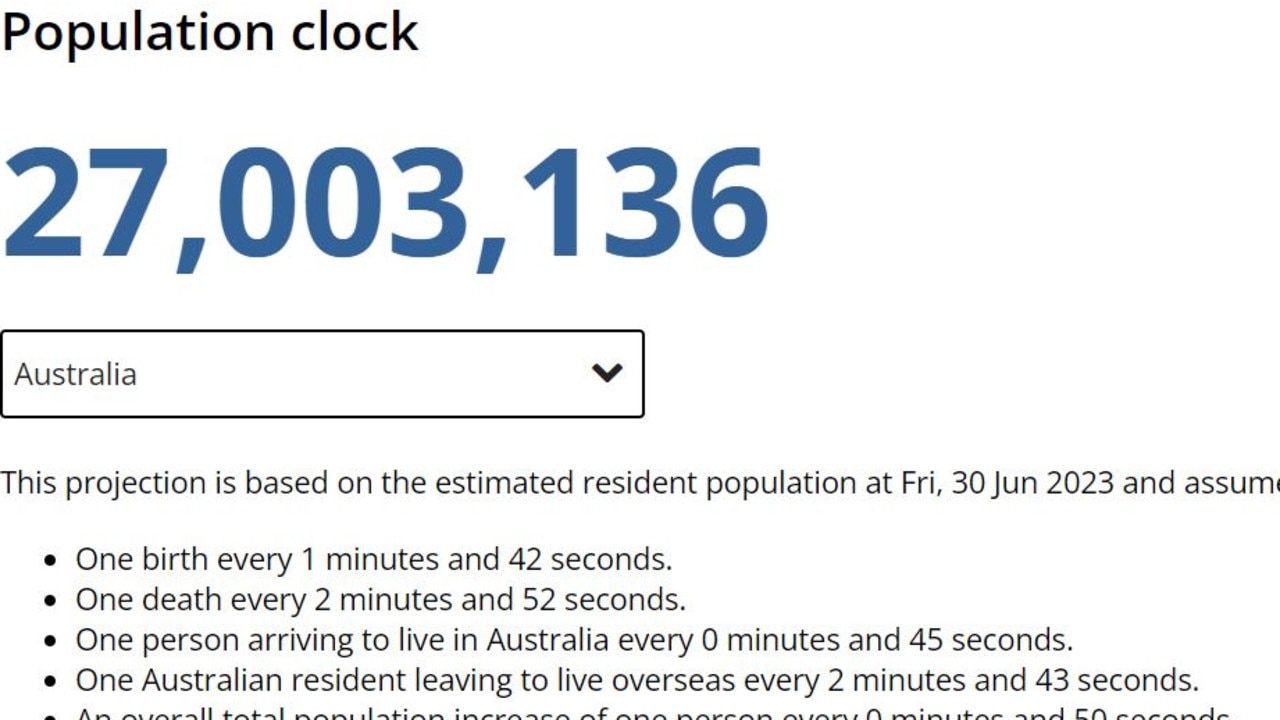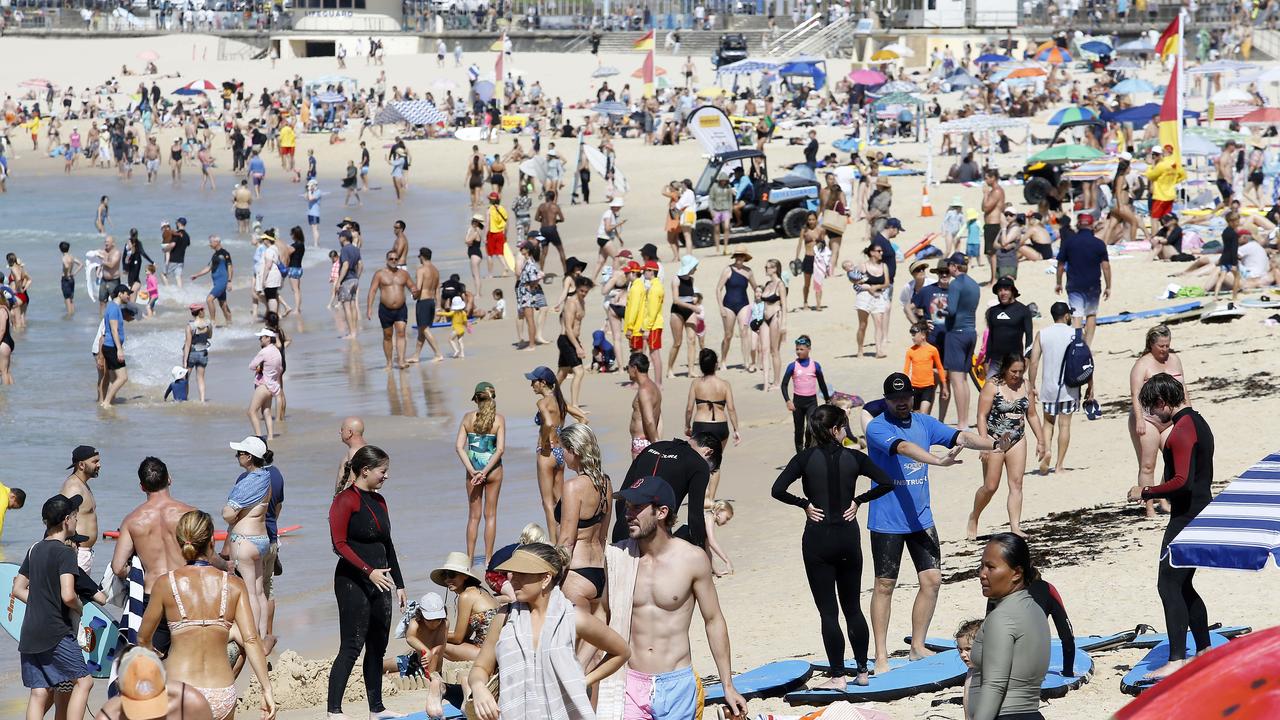‘Population panic’: Truth behind bombshell report as Australia grows to 27 million 18 years early
An expert has revealed the truth behind Australia’s new population milestone, which has come earlier than expected.

Australia’s population has surpassed 27 million people decades earlier than initially anticipated. But one expert has revealed the truth behind the ‘early’ milestone and why “we don’t need to panic”.
The Australian Bureau of Statistics’ (ABS) population clock reached the 27 million mark on Wednesday afternoon, after the country recorded an increase in 624,100 people in the 12 months to June 2023.
The milestone came 18 years year earlier than the Howard government’s first intergenerational report had predicted, which said the national population would not reach 25.3 million people until 2042.
But according to Australian National University demographer Dr Liz Allen, there’s no need for “population panic”, with experts long aware of the population surge.
“There’s been a lot of discussion about Australia reaching the 27 million milestone ahead of schedule … [based on] one intergenerational report” she told news.com.au
“That’s quite dangerous.”
Dr Allen, said there have been five intergenerational reports since the 2002 report, half of which predicted Australia would “meet the 27,000,000th milestone around about now”.
“In fact, one of them had us reaching it at about 2022-2023.”

Australia’s rise in migration
According to the ABS, Australia is experiencing a total population increase of one person every 50 seconds.
The major reason behind the growth is migration, with 737,200 overseas arrivals and 219,100 departures making up 80 per cent of the increase.
The total number of arrivals rose by 72 per cent since the previous year.
Dr Allen said Australia’s immigration is “artificially high” at the moment, due to demand following Covid border closures.
“During Covid we had an enormous deficit of people. We had more people leaving the country by order of tens of thousands of people, then coming in.”
With borders reopened, Australia is now experiencing “an artificially high number of incoming people”.
“The biggest source countries of people newly migrating to Australia are China and India, and that reflects what’s happening in the world where countries like Australia are experiencing an ageing population and need for skills,” she said.
New South Wales and Victoria are Australia’s largest growing states, receiving the bulk of overseas migration.
“That stands to reason because people who migrate generally need to be able to maximise their employment and their education potential. And the two most populous states – New South Wales and Victoria – have the greatest infrastructure by way of job opportunities and employment opportunities.”

Dr Allen said with migration, comes economic opportunity.
“Migrants have a net positive impact on this country … Migrants have been vital to fill the necessary skills to ensure that we’ve been able to build houses, roads, vital physical and social infrastructure, and to provide the necessary critical services like hospitals, medical and aged care.”
Australia’s future
As Australia’s population continues to grow, Dr Allen said the country will reach 28 million by 2026-2027 and 29 million by 2029-2023
We’re estimated to hit the big 30 million milestone by 2031-2032.
As we look to the future, Dr Allen said the government needs to address the country’s spiralling housing crisis and the need for more sustainable transportation to keep up with demand.
“The housing crisis is not the fault of population or people, but rather political short-sightedness that hasn’t invested in infrastructure in the long term,” she argued.
“All governments should be taking heed of [the fact] that intergenerational inequality is deepening, and it’s becoming more stubborn. We can no longer continue with the status quo of housing and other related policies.
“We must reimagine and drag housing policy into contemporary times and fix these broken systems.”






